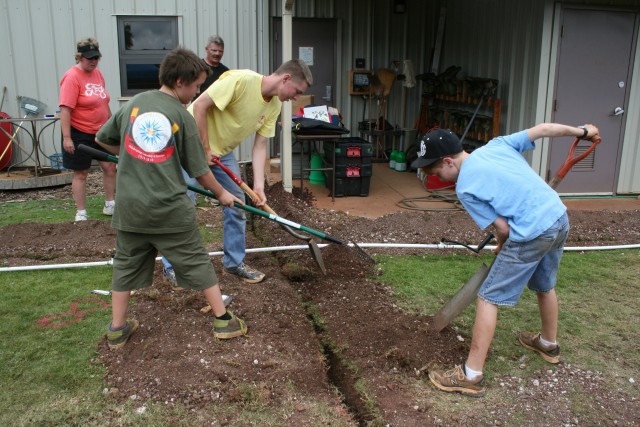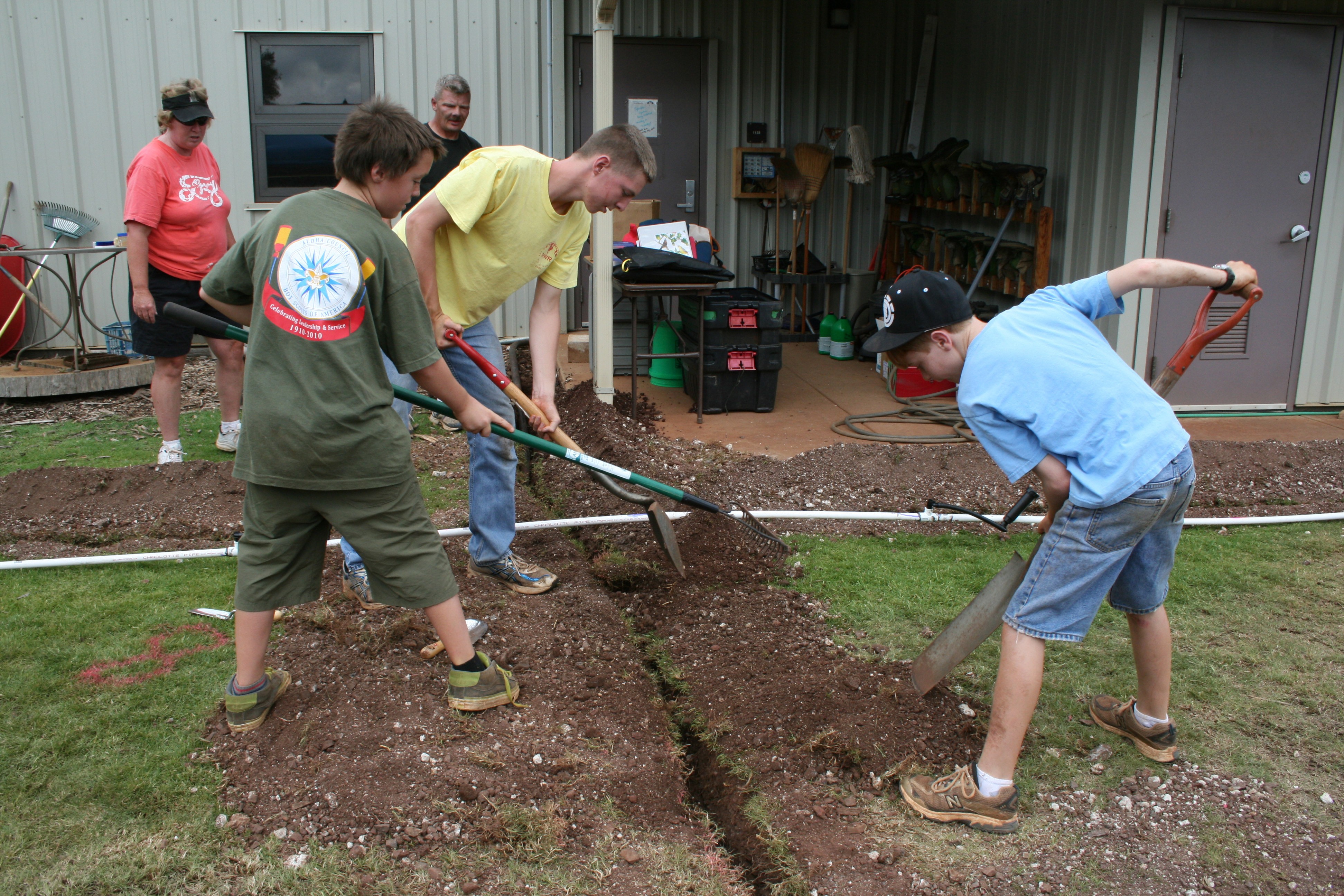SCHOFIELD BARRACKS, Hawaii (Aug.12, 2010) - The path to becoming an Eagle Scout is always a little bit "greener" when Boy Scouts partner with the Oahu Army Natural Resources Program, for their Eagle Scout service projects.
Mark Gitschlag, of Boy Scout Troop 24, Schofield Barracks, partnered with the ONARP staff and Directorate of Public Works to assist with Phase 1 of a rainwater-harvesting project. Phase 1 includes the installation of an irrigation system that demonstrates sustainable water management practices.
"The project will collect and store water from the roof of the ONARP's building, and will use collected rainwater to irrigate a section of lawn bordering the ONARP Rare Plant Interpretative Garden," said Hayley Diamond, clean water program specialist, DPW Environmental Division.
Gitschlag, a junior at Leilehua High School, in Wahiawa, started working on the project three months ago by collecting materials for the project.
The rainwater-harvesting project was a great assignment for two reasons: the project has the opportunity to benefit both the community and the ONARP staff, Gitschlag said.
"I wanted to help ensure that the rare plants that the ONARP staff takes care of stay alive, so people can enjoy them," he said.
Gitschlag coordinated a group of volunteers to assist with the installation of the irrigation system. Eight Scouts from Troop 24 and Gitschlag's parents, Richard and Cathy, volunteered and also advised the Scouts during the project.
Richard Gitschlag is a specialist assigned to Headquarters and Headquarters Battalion, U.S. Army-Pacific.
"This project will definitely benefit ONARP's Interpretative Garden as it's been a challenge to keep plants watered, especially during the summer months," said Kim Welch, outreach specialist, ONARP Environmental.
"Caring for our plants requires a lot of staff time (for) coming out and watering the plants, daily. The system will basically be self-maintained and help us in keeping rare plants in our Interpretative Garden alive and well," she said.
Diamond explained that a 1,000-square-foot surface will hold six gallons of water after one inch of rainfall.
"The roof of the ONARP building is 2,000 square feet, and this area will receive, on average, 40 inches of rain a year," she said. "We can then expect that we'll be able to capture 45,000 gallons of water a year with this system."
An uncompleted portion of Phase 1 is to erect a weather station that will be hooked up to the irrigation system. Through the use of a solar-powered regulator, the completed system will provide water to the garden only when appropriate. For example, the system will not irrigate the area when it is raining.
The second phase of the project includes refurbishing an unused sediment tank for rainwater storage, modifying the roof gutters and installing plumbing to convey rainwater to the sediment tank.
Gitschlag and volunteers completed the irrigation project in three days, and Gitschlag should find out in a few months if he has achieved Eagle Scout rank with the completion of this project.


Social Sharing